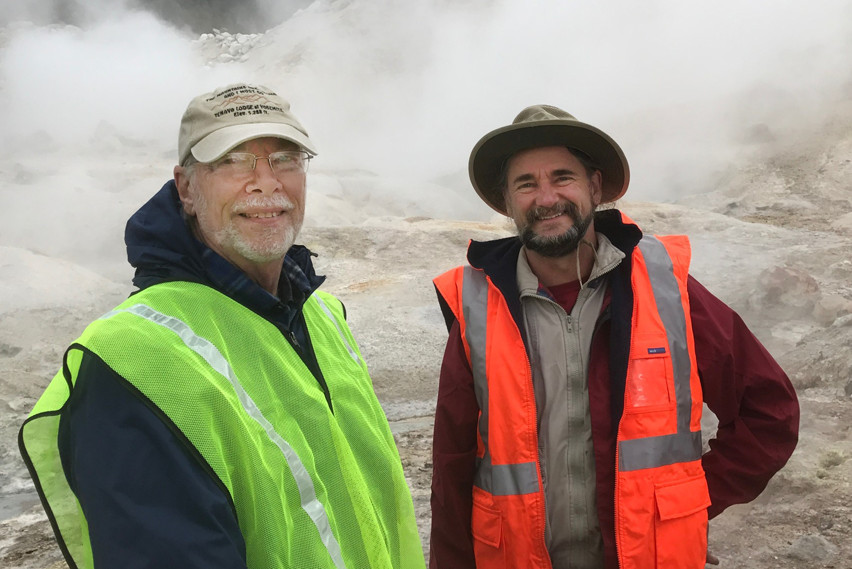From volcanic puddles
A prevalent theory posits that simple organic molecules initiated a primitive version of metabolism in hydrothermal vents deep in the ocean, leading four billion years ago to the origin of life. Professor of biomolecular engineering David Deamer thinks otherwise.
"There are layers of difficulty trying to get reactions to work in underwater vents," Deamer said. As explained in his book Assembling Life (January 2019), Deamer’s alternative theory suggests that these critical molecular transformations occurred under more favorable conditions: in hot springs associated with volcanoes.
Small pools fed by hot springs would have contained mixtures of nucleotides—the building blocks of DNA and RNA—mixed with lipids, the primary component of cell membranes. When the pools evaporated, concentrated films of nucleotides and lipids would form on mineral surfaces. Under these conditions the nucleotides spontaneously link into DNA and RNA, a reaction demonstrated in Deamer’s lab, which, incidentally, led to a patent. Ongoing wet-dry cycles selected for chemically stable, lipid-encapsulated nucleic acid chains, creating the molecular seeds for the emergence of living organisms.

Deamer and research associate Bruce Damer tested the idea by adding nucleotides to water samples from natural hot springs in volcanic sites around the world. Analysis of the mixtures cycled through wet-dry phases revealed microscopic vesicles containing polymers. Although not alive, these “protocells” are an essential first step toward molecular systems that can initiate Darwinian evolution, Deamer said.

